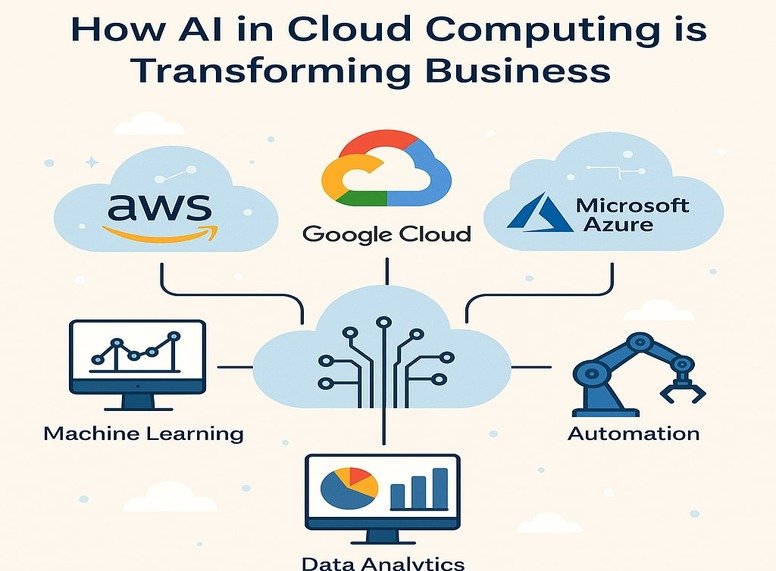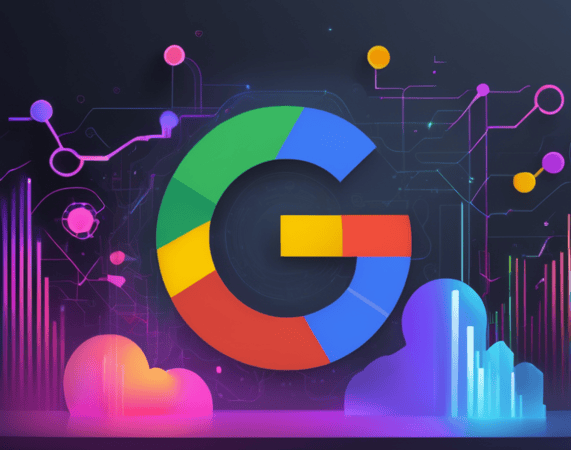Cloud-based AI services are changing how companies use artificial intelligence (AI) in their daily operations. These services make AI tools easy to access through the cloud, removing the need for expensive hardware or expert teams. Leading providers like Amazon Web Services (AWS), Google Cloud AI, and Microsoft Azure AI offer scalable solutions that help businesses grow and innovate. In this blog, we’ll explore how cloud-based AI services are making AI adoption simple and effective.
How Cloud Technology Simplifies AI
Cloud-based AI services allow businesses to use AI tools through internet-based platforms instead of managing their own servers. In the past, companies needed powerful computers and large storage systems to run AI applications. This setup was costly and difficult to maintain.
Today, cloud-based AI removes these barriers. Companies can access AI models, data storage, and computing power directly from cloud platforms. As a result, businesses only pay for what they use, making AI adoption flexible and affordable.
Amazon Web Services (AWS) AI Services
AWS offers a wide range of AI services designed to meet different business needs. These include:
- Amazon SageMaker: A managed service that helps build, train, and deploy machine learning models.
- Amazon Rekognition: A tool for analyzing images and videos, used in facial recognition and content moderation.
- Amazon Lex: A service for building chatbots and voice assistants with natural language understanding.
Because of these tools, many industries use AWS for predictive analytics, customer service automation, and personalized recommendations.
Google’s AI Tools in the Cloud
Google Cloud AI provides AI services that are easy to use for both developers and non-experts. These services include:
- TensorFlow: An open-source library for creating machine learning models.
- Google Cloud AutoML: A set of tools that helps build custom AI models with little coding.
- Speech-to-Text & Vision AI: Services that convert audio into text and analyze images.
Google’s AI tools are perfect for businesses working on image recognition, voice search, and automating system maintenance. Furthermore, their user-friendly design helps teams implement AI solutions quickly.
AI Innovations with Microsoft Azure
Microsoft Azure AI delivers a powerful suite of AI services, including:
- Azure Machine Learning: A platform that supports building, training, and deploying machine learning models.
- Cognitive Services: Pre-built APIs for tasks like language understanding, speech recognition, and computer vision.
- Azure Bot Service: A toolkit for creating intelligent chatbots to automate customer interactions.
Industries like healthcare, finance, and manufacturing use Azure AI for predictive insights, AI-driven automation, and enhancing user experiences.
How AI is Shaping Cloud Computing
AI is becoming a vital part of cloud services. It improves efficiency by automating routine tasks and optimizes the use of resources. Moreover, AI enhances cloud security by detecting threats in real time. Because of these advantages, businesses can focus more on strategy and innovation rather than IT maintenance.
As AI technology continues to evolve, cloud platforms will play an even larger role in delivering AI capabilities to businesses across sectors.
Conclusion
Cloud-based AI services from AWS, Google Cloud AI, and Microsoft Azure AI help businesses leverage artificial intelligence without managing complex infrastructure. These platforms make it easy to automate processes, analyze data, and improve customer experiences.
Choosing the right cloud AI service depends on your specific business needs, industry requirements, and existing technology setup. However, one thing is certain — adopting AI through the cloud is now essential for businesses aiming to stay competitive in the digital age.








